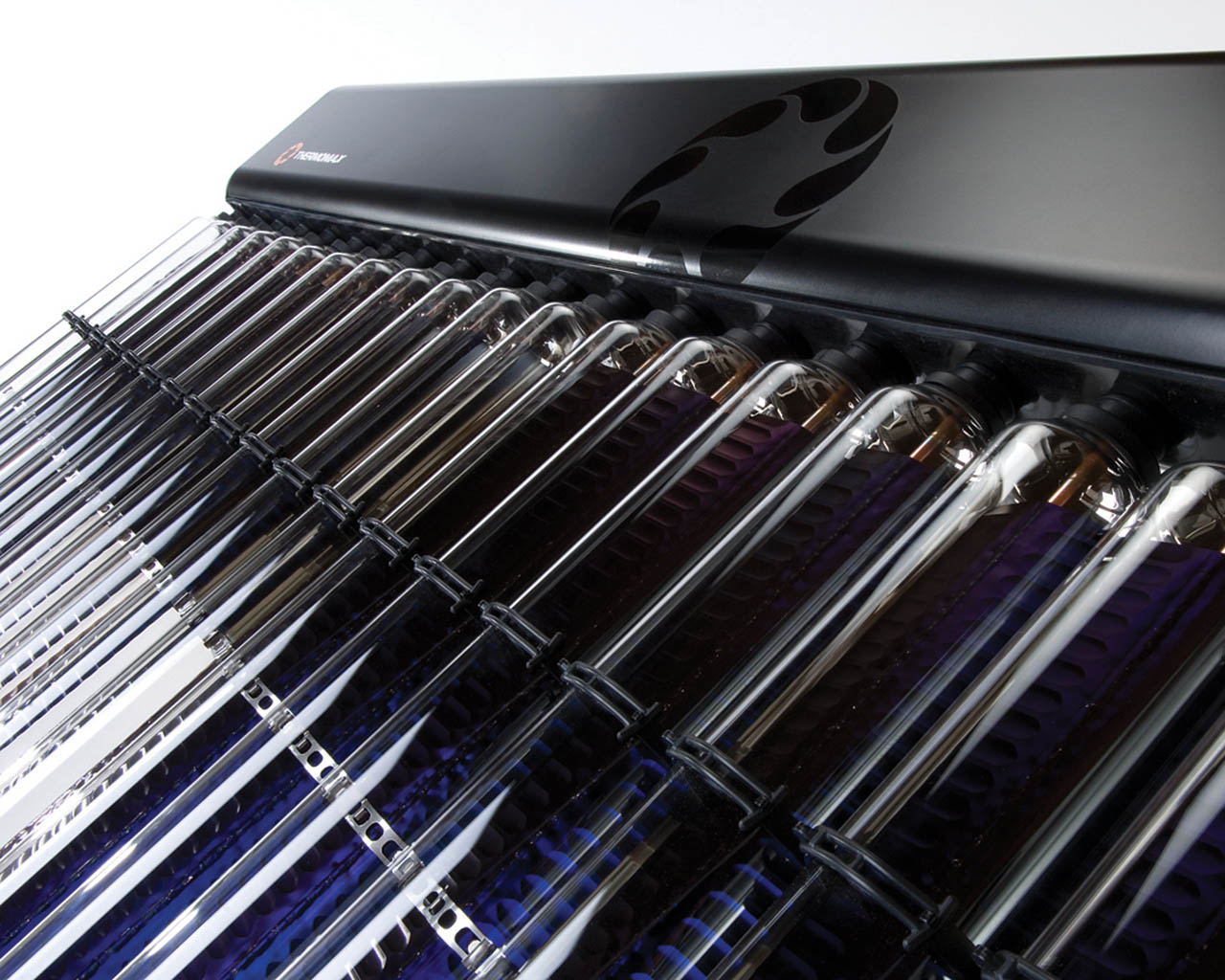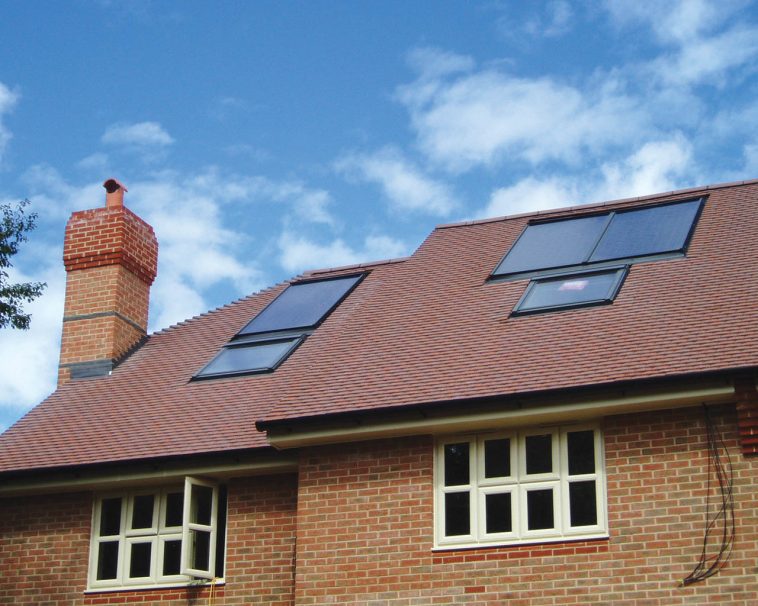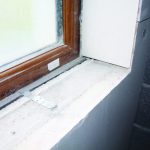Ireland actually enjoys a very healthy amount of solar radiation, not unlike that of the South of England, so what do you need to know to retrofit a solar thermal system in your home?
With passive houses becoming ever more popular and a greatly increased awareness of the value of ‘free’ energy, as well as grants to encourage you to take the plunge, now is the time to decide if you should install such a system on your existing home. However the sums for retrofitting are more complicated than for new builds as it may involve changing cylinders, bringing in new scaffolding, and so on, all of which may result in added costs. Indeed, while you could envisage paying in the order of €3,000 or £2,500 for a solar system in a new build, you’re likely to be looking at double that price in a retrofit scenario. That said, you can secure a grant to help you; in ROI you can get €800 through SEAI and in NI £600 through Power NI (formerly NIE Energy).
Can it supply enough energy?
As yet, solar space heating is in its infancy here although in Sweden and Denmark for example, the combination of solar space and DHW is very popular. The difficulty is that most solar gain is available at a time when the house doesn’t need it for space heating. Solar water heating works at its best during the summer, just at the time when standard boilers are at their least efficient.
Solar panels, however, are able to provide hot water, but only enough for a household’s washing and bathing needs for about 50% of the year so you cannot rely on them alone, a back up system will be required. For many people this duplication may seem an expensive luxury, but before you move on, take a few moments to consider the wider picture.
Conventional hot water heating uses fossil fuels or nuclear energy and creates carbon dioxide emissions, two of the most damaging impacts we have made upon our planet. Averages are of course never accurate for individuals, but they do provide a useful guide. An average system therefore, used by a ‘typical solar owning’ household, will provide between 40% and 60% of the fuel required for generating domestic hot water (DHW). This is equivalent to between 1,200 and 1,800 kilowatt hours (kWh) per year. You can do some simple arithmetic based on your current electricity charges per kWh to find out how much you will save. The balance is usually provided either indirectly (via a gas, oil or electric boiler heating second coil within the cylinder), or directly (via electric immersion heaters in the cylinder).
[adrotate banner="58"]Working out when and how much of the DHW you need for bathing and washing can be provided by solar heating depends upon the solar fraction percentage of hot water you want to obtain from the sun. For example, if you design a system to provide sufficient hot water between March and September it will therefore provide more than you need during the months in between. You can deal with this by diverting the surplus into a radiator, usually in the bathroom or if you don’t want more heat in the room, in the loft. Some systems such as drain back are specifically designed to effectively go to sleep when not required. Or perhaps this is just the excuse you need to indulge in that hot tub…
At this point the law of diminishing returns comes into play when trying to achieve higher solar fractions with larger collector areas, though it is also true that a large percentage of the overall cost is in the cylinder and control systems, so adding panels does not increase the overall cost greatly. If properly designed and installed, solar water heating systems should give many years of trouble free service. Vacuum tubes may lose their vacuum after about 20 years and will then require replacement flasks. For systems with separate flasks this is a relatively cheap changeover, though tubes with a built-in flat plate are more expensive. Flatplate panels should last somewhat longer, though their performance may fade. Both systems will last longer if you have taken precautions to prevent them overheating by providing appropriate heat dumping arrangements.
Before giving you a quotation, the supplier should call with you to check the condition of your roof, access to it and the existing hot water system. (In a new build they should be given a copy of the plans at an early stage.)

How does it work?
There are three main elements within solar water heating systems:
- The solar collector
- Heat transfer system
- Hot water storage
The ‘primary system’ includes the solar collector, heat transfer fluid, pipes and heat exchanger. The ‘secondary system’ refers to the parts holding the DHW. In an indirect system the primary system fluid and DHW are different and separated by a heat exchanger, normally a coil inside the hot water cylinder/store. There will usually be a second coil for the central heating, and possibly a third for a solid fuel system. There are some systems that heat the hot water directly.
As an approximate guide, to provide a four person household with DHW requires 3m2 to 5m2 net solar collector area. This very much depends upon usage, as anyone with teenage children will be only too well aware! It also depends upon collector efficiency, orientation and geographical location. Panels normally come in multiples of 1m2.
The optimum pitch is between 30° and 50°, orientation between SE and SW, however, you can compensate with more collectors if your proposed site lies outside these parameters. Collectors facing due East or West lose approximately 20% of their output. Another factor to watch out for is shading, (avoid situations that have two or more hours obscured on a Spring or Autumn day), and being close to trees generally.
There are two types of collector, the vacuum tube collector and the flat plate collector. The first of these comprises rows of tubes with each one plugged in to a manifold through which the transfer fluid flows. The tubes are evacuated to reduce convection losses and this type of collector cannot normally be integrated into the roof but is easier to retrofit because they are lighter to lift into place and have a reduced wind loading.
A flat plate collector consists of a large sheet of metal with a selective coating to maximise heat absorption. This plate has pipework carrying the transfer fluid and is held within an insulated box. The glazing is normally glass but polycarbonate plastic may be used in coastal locations to reduce weight. Plastic has an advantage in that it can be moulded to custom shapes and sizes, but it can also be scratched. In contrast to the tube collector, flat plates can be integrated into the roof as well as sit proud. With careful design, it is sometimes possible to mount a panel on a conservatory roof with the cylinder inside the house but close by so that the system thermosyphons, eliminating the need for an electric pump. Frost protection is normally required although some flatplate systems are designed to drain back their water into the house so that the panel is empty when not in use. Although both systems will perform well on hot sunny days, vacuum tubes may perform better in cloudy conditions or when it is either windy or cold and thus extend the operating season. The aperture area on a vacuum tube system is lower and it does produce more heat for its aperture area, but in terms of gross area (i.e. total area taken up by the panel), the output would be similar.
The response of the collector varies constantly because it depends upon the temperature of the ambient air, temperature of the collector fluids, the insulation of the collector and the angle of the direct sun, all of which tend to render any ‘collector efficiency factor’ as fairly meaningless. There is a European test (EN 12975) for this, and any product listed by SEAI or Action Renewables is independently tested by a recognised solar laboratory. This is quite stringent as in order to get listed the product must pass with no issues raised in the report. You should also be wary of the term ‘area of collectors’ as there are three possible ways of describing this:
- Gross area: largest overall collector dimension
- Net absorber area: All areas that can be heated through the aperture but may be shaded at some incident angles.
- Aperture area: Unshaded opening that lets light in (or reflects light in). This is the best one to use.
All energy delivering systems require controls which may also be used to provide extra information such as monitoring of long term performance or with warning indictors. In solar energy systems this is usually achieved via a differential thermostat control (DTC). Using sensors in both the collector and store, by comparing the temperature difference between them it operates the pump to optimum advantage, wasting neither electricity nor useful collector heat. The typical differential is about 6°C. The DTC will provide information on temperatures at various points on the system, switch on the pump to prevent freezing, record historical data and the number of hours the pump has run. Advanced models vary pump speed for optimum collector efficiency, control auxiliary heating and operate sterilisation cycles to prevent bacteria growth.
An alternative to the DTC is a light sensor fixed next to the thermal collector, but still requiring extra controls to deal with freezing etc. as above. They can also power the pump and therefore save electricity. Finally, in order to check that no air is getting into the system or vapour locks, there is a dedicated flow indicator and regulator in the form of a clear glass window and a float.
Where hot and cold water exist there is the potential for bacterial growth, scalding, scaling and unintentional heat loss. Normally water is heated by the central heating system at around the same time it is being consumed, whereas solar hot water requires long-term storage. For that reason, insulation standards are particularly important, and although almost half the cost of a system may involve improvement to the cylinder and associated pipework, this will improve the performance of the system all year round. Cylinder temperatures can with advantage be allowed to reach much higher than 60°C, higher temperatures equate to more stored heat. If you are in an area with high limescaling which a higher temperature would tend to exacerbate, you are better to use a water softener to avoid limescale, and a thermostatic mixing valve to avoid scalding. The problem of bacteria, such as the infamous Legionella, is addressed by ensuring a regular sterilisation temperature within the heat store via the gas, oil or electric back up system.
As with any other system, controls can fail, be it a stuck thermostat on an immersion or a failed probe for a solar controller. For this reason, it is best practice to install a thermostatic mixing valve on the outlet from the hot water cylinder. This may cause some pressure loss. Careful choice of size of pipe is also important as the larger the pipe the more wasted hot water in it each time water is run off.
As for the cylinder, the best option is a tall narrow one that improves solar performance due to the increased stratification between the cold water at the bottom and hot at the top. They are highly insulated with a large coil in the bottom of the cylinder which serves as a heat exchanger for the solar panel. A second coil above the middle of the cylinder is then connected to the central heating boiler. Ideally the panel should be as close to the cylinder as possible.
There is no ‘one size fits all’ system, the best are designed for the climatic conditions prevailing in your region, and it is not just a matter of the amount, size or type of collectors on your roof. The size of the primary pipework carrying water from the panel to the cylinder tends to be a smaller diameter than that used on the Continent because of our intermittent sunshine and thus slower heating, but it will also depend upon the panel area. Long pipe runs from the panel to the cylinder can reduce efficiency with the greatest losses being on overcast days.

Good Housekeeping
With a solar water heating system it is not a case of fit and forget, but it does not require servicing annually as with an oil or gas boiler. Approximately every three years the system should be flushed out with clean water and anti-freeze renewed. The primary circuit must not remain connected to the mains as anti -freeze could be pushed into the house system when there is an increase in pressure in the solar circuit, and contaminate the drinking water, all solar systems should have a separate fill valve and a completely closed loop. Things like checking for leaks, condensation or damp spots, keeping the collector glazing clean and noting if the circulating pump has become noisy, should all be attended to immediately.
Although you are unlikely to require Planning Permission (except to Listed Buildings or those in Conservation areas), it is best to check. In ROI for example, permission is not required for roof mounted systems up to 12m2 provided they are more than 50cm from any roof edge. It may also be of interest to your insurers and mortgage provider.
Installing a solar water heating system is a complex task which must be undertaken by a professional who has a BPEC Certificate as an installer and holds current insurance. In NI Building Control will inspect the work and if a system is being fitted to an existing property, a report from a structural engineer is also required.



